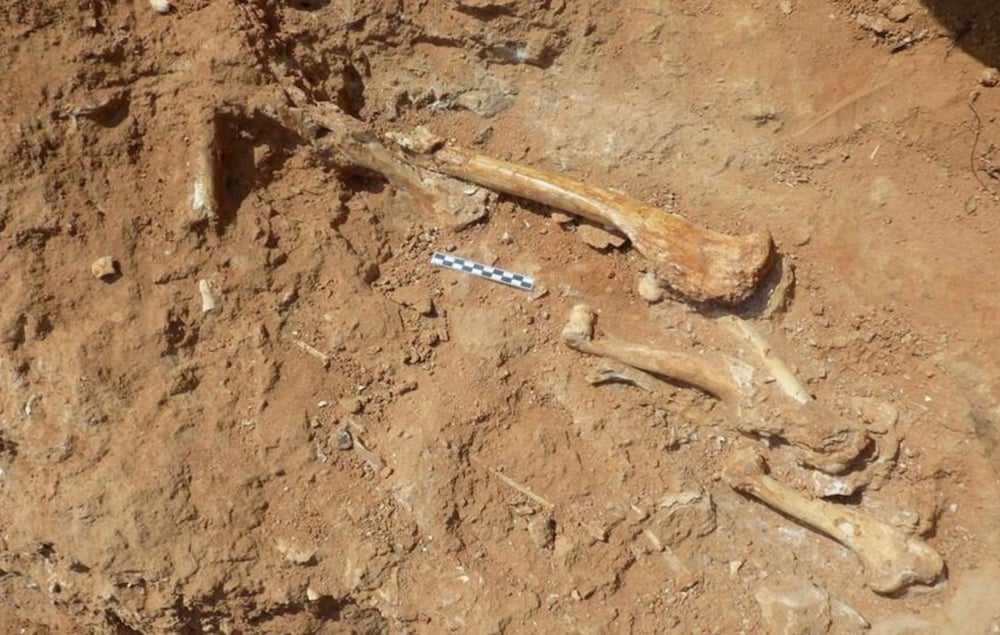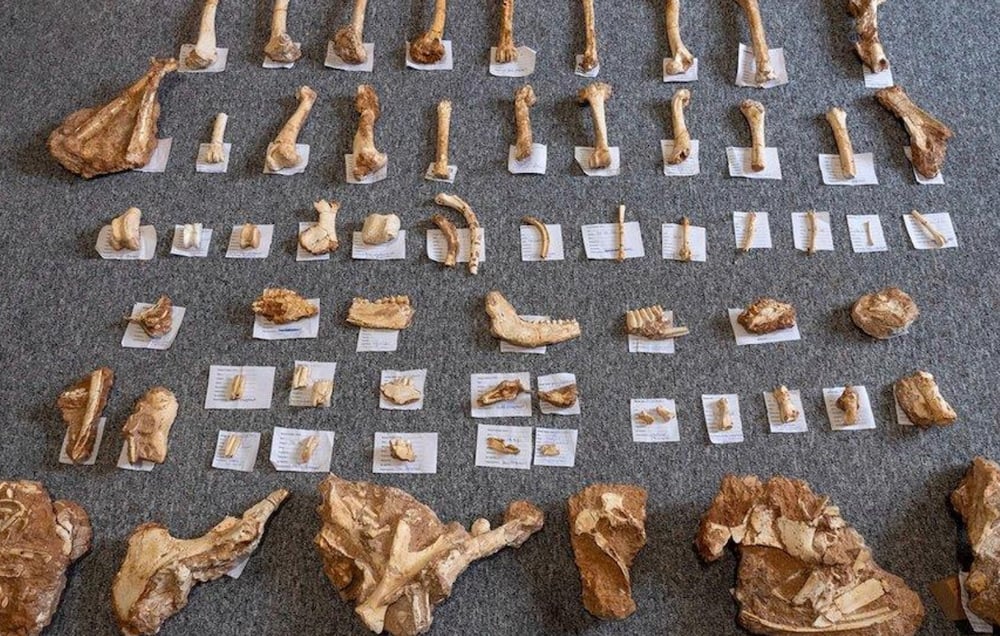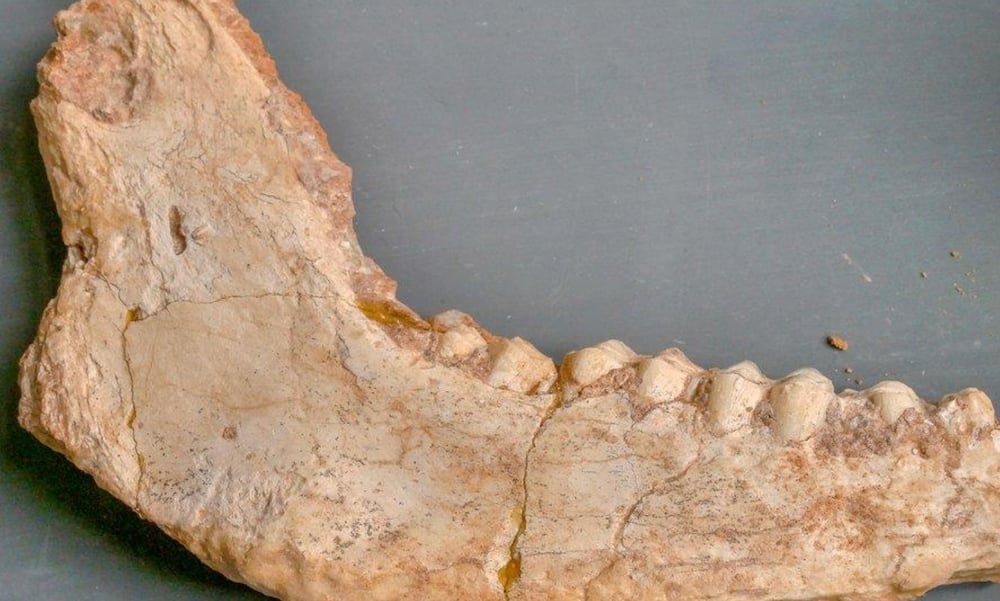
Two-million-year-old fossils were recently uncovered in the Petrified Forest on the Greek island of Lesvos in a surprise find that shows that very large mammals including horses, cattle, deer, and antelope once grazed its verdant slopes.
The bones of these and smaller animals, including lagomorphs, resembling today’s rabbits, were uncovered at the site near Thermi on the eastern side of the island in an archaeological dig that has just concluded. The western side of Lesvos is famous for its enormous petrified forests, with mineralized logs from that era being found all the time.
This draws special attention to the eastern part of Lesvos, making the island almost akin to a Jurassic Park, showcasing all the flora and fauna that once existed there in the area. The Museum of Natural History of the Petrified Forest of Lesvos displays the many kinds of trees whose remains were fossilized due to ash that covered them completely after they had been killed by blasts from volcanic eruptions.

Two-million-year-old fossils only the most recent ancient finds on Lesvos, the island of the petrified forest
The research, undertaken by researchers associated with the Museum of Natural History of the Petrified Forest of Lesvos, started in November 2019; despite the many problems created by the pandemic, the first phase has now been completed.
Nikos Zouros, the director of the Museum of Natural History of the Petrified Forest of Lesvos, a professor of the University of the Aegean, tells Greece’s news service, AMNA, that “The research revealed hundreds of vertebrate bones that lived in Lesvos the geological period of the lower Pleistocene, that is, about two million years ago.”
Zouros says that “The rich material of the paleontological excavations under study, testifies to the richness of the island’s fauna, reveals important facts about the fauna and ecosystems of the Eastern Aegean and the connection of the islands with the neighboring Asia Minor peninsula.”
More than 500 different fossil specimens
The excavations have brought to light approximately 500 identifiable specimens and many more fossils from undetermined species.
The new dig was undertaken as a result of the discovery of the first fossil in sedimentary rocks on the eastern side of Lesvos. Zouros told reporters: “It was a jaw fragment that has a small part of the denture and probably belongs to a small antelope [, and] an exploratory investigation was then launched to determine if there were any other fossils.”
“Fragments of fossilized bones were found in the sediments and the existence was found, in the same area, of large tectonic cavities created in the limestone rocks which were then filled with fossilized sediments,” Zouros reported.

Some fossils so delicate researchers had to cement pieces together on site
This prompted researchers to plan for a systematic excavation at the main fossil site. In the meantime, they continued to sift through the sediments in hopes of recovering micro-fossils in them.
They soon found what they called “large blocks of osteological material,” which they believe had moved downward from a higher place at the site at one point. Eventually, Zouros said, the existence of a layer of fossilized bones was revealed.
“The first fossils found were skeletons of large ungulate mammals, mostly antelopes (characterized by an even number of fingers on the hooves, usually two or four). The condition of the bones was not very good, as most of them were quite disintegrated, due to the increased humidity,” he explained.
Excavations started up in June 2021, when the most essential phase of the systematic work focused on the central part of the layer, where an increased accumulation of fossil bones was observed. “The dense concentration of bones in the sediment and their burial without a specific orientation, has often led to the redefinition of the excavation methodology in order to recover the fossils more safely,” Zouros explained to reporters.
“The dense concentration of the bones made the excavation very difficult, as the work had to proceed at a very slow pace in order not to cause damage [, as] the particularly reduced strength of the fossils required careful and precise work,” he noted.
For this reason, on-site work on most of the osteological material was performed by experienced conservationists from the Museum of Natural History of the Petrified Forest of Lesvos, which even included attaching the most fragile pieces together in situ before they could be excavated.
In cases where the high concentration of bones acted as a deterrent to the individual extraction of fossils, “fossil blocks” were created, which were taken out as a whole and processed in the laboratories of the Museum.
The wealth of materials recovered during the excavation period consisted mainly of mammalian bones, most of them elongated bones, but without the presence of smaller mammals’ skulls and jaws. Eventually, all the identifiable specimens were removed from the layer and transferred to the laboratories of the Museum.
See all the latest news from Greece and the world at Greekreporter.com. Contact our newsroom to report an update or send your story, photos and videos. Follow GR on Google News and subscribe here to our daily email!



